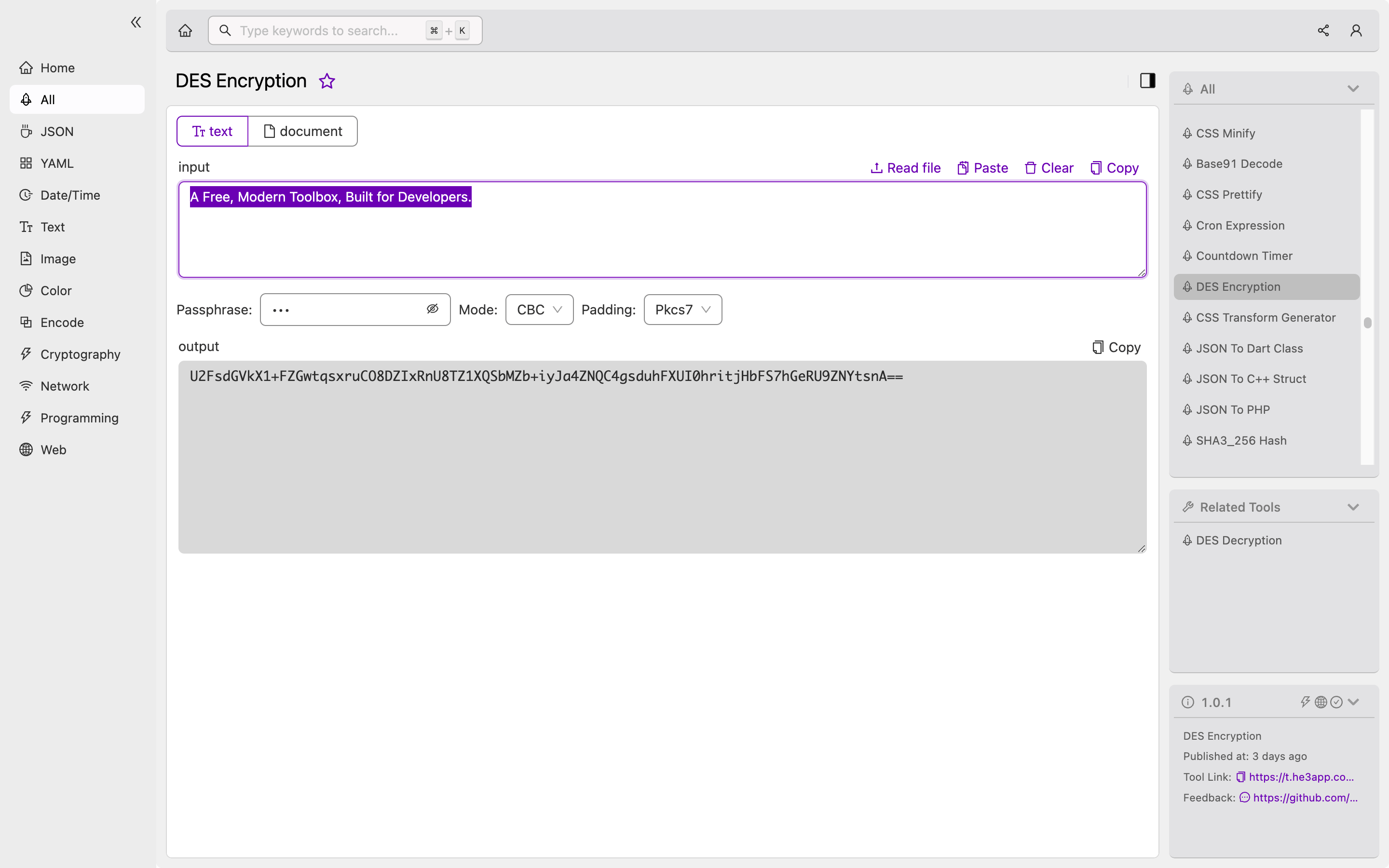Introduction
In today’s data-driven world, securing sensitive information from unauthorized access is critical. One of the ways to protect sensitive data is through encryption. The Data Encryption Standard (DES) is an encryption algorithm that has been widely used over the years. It is a symmetric key algorithm that provides confidentiality, integrity, and authentication. In this article, you will learn about the fundamental concepts of Des Encryption, how it works, and how to implement it in your projects for better data security.
Understanding Des Encryption
Des Encryption is a block cipher that encrypts data 64 bits at a time. It uses a 56-bit key, making it relatively easy to implement in hardware devices. The algorithm consists of 16 rounds, where each round performs substitution and permutation operations on the input data.
At each round, a subset of the 56-bit key is used to modify the input data. The complexity of DES lies in the mathematical functions used in each round, which provide confusion and diffusion. The confusion function makes it difficult for an attacker to determine the relationship between the input and the output data, while the diffusion function ensures that a change in one bit of the input data affects many bits of the output data.
How to Implement Des Encryption
To implement Des Encryption, you can use one of the many programming languages that support it. Here is an example of how to implement Des Encryption in Python:
from Crypto.Cipher import DES
key = b'abcdefgh'
plaintext = b'This is a test'
cipher = DES.new(key, DES.MODE_ECB)
ciphertext = cipher.encrypt(plaintext)In the example above, we first import the DES module from the Crypto package. We then define the key and plaintext values and create a DES object using the ECB mode of operation. Finally, we encrypt the plaintext to obtain the encrypted output.
Or you can use Des Encryption tool in He3 Toolbox (https://t.he3app.com?r05f ) easily.

Scenarios for Developers
Developers can use Des Encryption to secure data transmission over insecure networks or store sensitive data on disk. It can also be used to protect passwords, credit card information, and other confidential data.
Key Features
Here are some key features of Des Encryption:
- Provides confidentiality, integrity, and authentication
- Uses a 56-bit key, making it easy to implement on hardware devices
- Uses a block cipher that encrypts data 64 bits at a time
- Uses a combination of substitution and permutation operations to provide confusion and diffusion
Misconceptions and FAQs
Is DES still secure?
DES has been around for many years and has been widely used. However, due to advances in technology, DES is no longer considered secure. It is vulnerable to brute-force attacks, where an attacker tries all possible keys to decrypt the encrypted data.
Can DES be used in real-life scenarios?
No, DES is no longer considered secure and should not be used in real-life scenarios. Instead, developers should use more secure encryption algorithms like AES (Advanced Encryption Standard).
Conclusion
In conclusion, Des Encryption is a widely used encryption algorithm that provides confidentiality, integrity, and authentication of data. It is easy to implement and can be used to secure sensitive data transmission over insecure networks or store confidential data on disk. However, it is vulnerable to brute-force attacks and should not be used in real-life scenarios. Developers should use more secure encryption algorithms like AES for better data security.
References:
